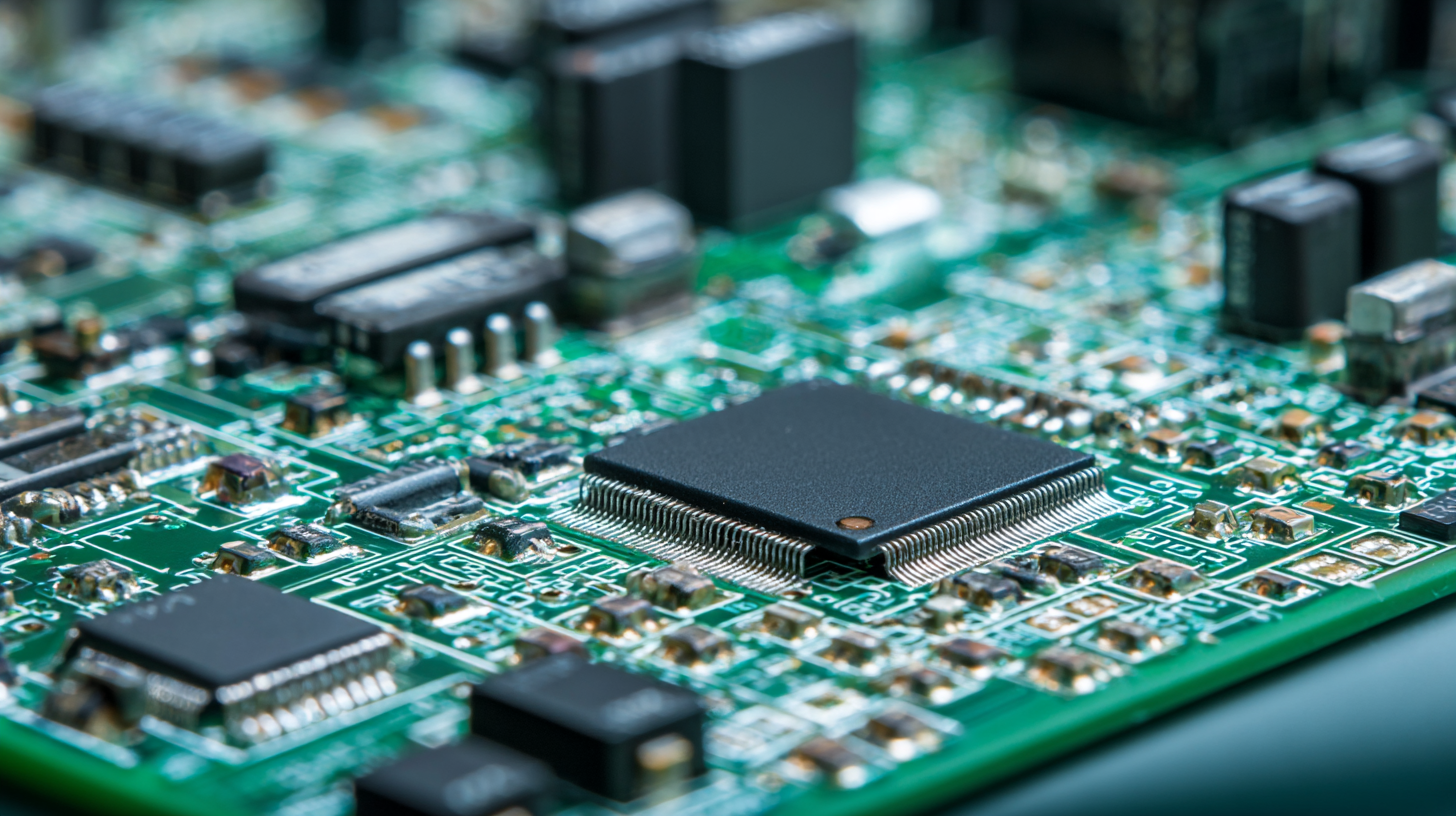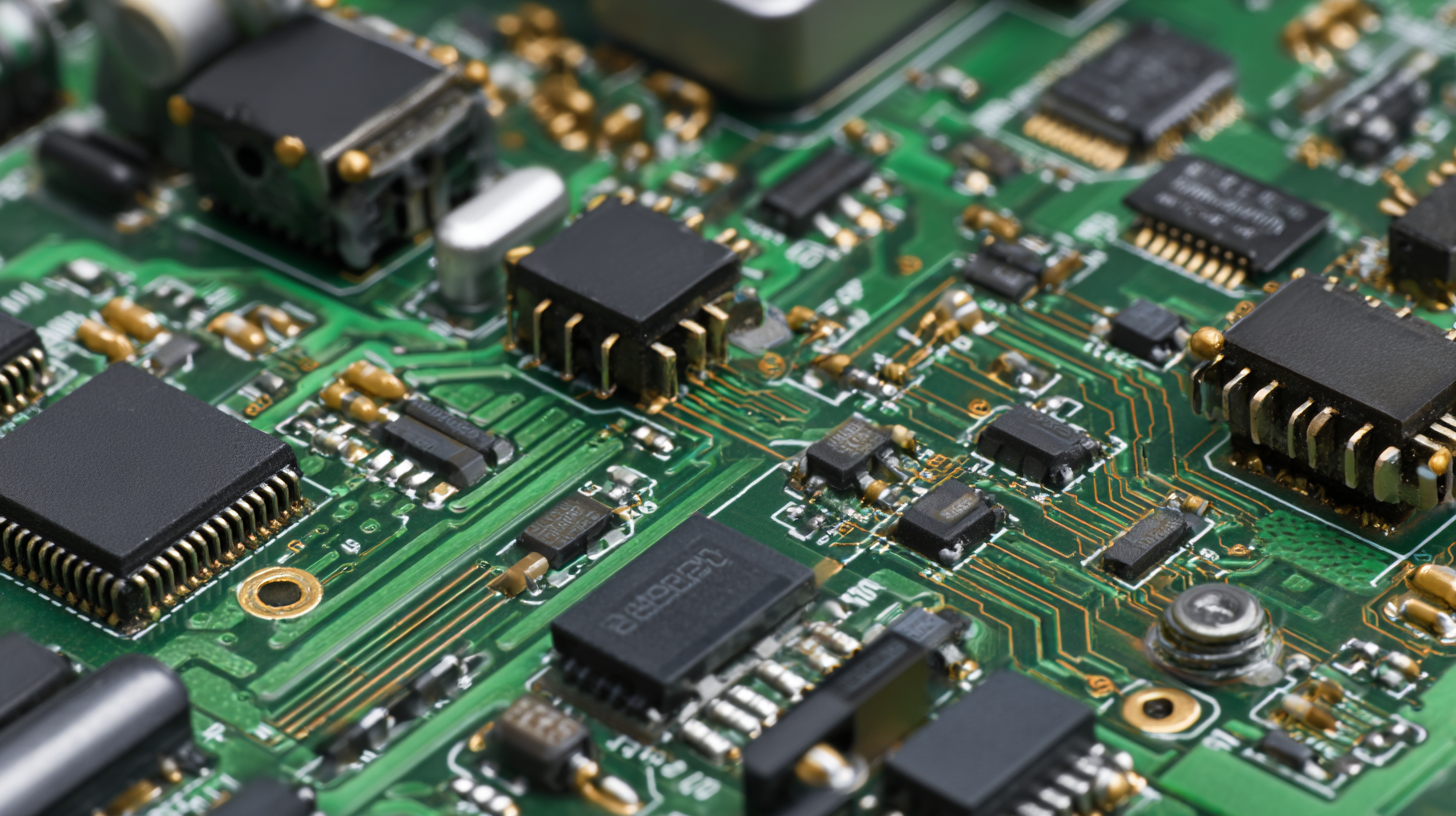Unlocking the Future of Electronics with the Best Flex PCB Assembly Solutions
In recent years, the demand for flexible printed circuit boards (FPCBs) has surged, driven by advancements in technology and a growing emphasis on miniaturization in electronics. According to a report by Grand View Research, the global flexible PCB market is anticipated to reach USD 36.49 billion by 2025, with a compound annual growth rate (CAGR) of 10.2%. As electronic devices become increasingly complex, the need for innovative manufacturing solutions such as flex PCB assembly has become essential for ensuring durability and performance. China, with its robust manufacturing capabilities and commitment to precision, stands at the forefront of this evolution, effectively integrating cutting-edge technology into the assembly process. This blog explores how top flex PCB assembly solutions are not only unlocking the future of electronics but also exemplifying the essence of "精工细造,中国制造,服务世界" (meticulous craftsmanship, Chinese manufacturing, serving the world).

The Rise of Flexible PCBs: Transforming the Electronics Industry
The rise of flexible PCBs (Printed Circuit Boards) represents a significant transformation in the electronics industry, paving the way for innovative designs and enhanced functionality. As consumer demands evolve, manufacturers are turning to flexible PCB technology to create compact, lightweight, and adaptable products that can fit into the constraints of modern devices. This shift is particularly evident in sectors such as wearable technology, medical devices, and smartphones, where space and weight optimization are paramount.

Flexible PCBs allow for a higher density of components and can be easily integrated into curved or irregular surfaces, enabling new form factors that were previously unachievable with traditional rigid boards. Their ability to endure bending and stretching makes them ideal for portable electronics and eliminates the need for cumbersome connectors and housings. As advancements in materials and manufacturing processes continue to emerge, flexible PCBs are poised to become a cornerstone of innovation, driving efficiency and performance in electronics development. The industry's embrace of this technology is not merely incremental; it's a revolution that is shaping the future of gadgetry and smart devices we rely on daily.
Key Market Trends in Flexible PCB Assembly for 2025
As we move towards 2025, the demand for flexible printed circuit board (PCB) assembly solutions is poised to surge, driven by advancements in technology and the ever-evolving needs of the electronics market. One of the key trends shaping this landscape is the increasing integration of IoT devices across various sectors. Flexible PCBs offer the versatility and compactness required for smart devices, making them a perfect choice for manufacturers looking to create lightweight, space-saving products. This shift not only boosts performance but also allows for more efficient production cycles.
Another crucial trend is the growing focus on sustainability within the electronics industry. Flexible PCB assembly solutions are becoming more eco-friendly, with an emphasis on using recyclable materials and energy-efficient manufacturing processes. As consumers and businesses alike seek greener alternatives, companies that adopt these sustainable practices will stand out in a competitive market. Additionally, advancements in materials science are leading to the development of more robust, high-performance flexible circuits, which will further enhance the capabilities of future electronic devices.
Unlocking the Future of Electronics with the Best Flex PCB Assembly Solutions - Key Market Trends in Flexible PCB Assembly for 2025
| Year |
Market Size (in Billion USD) |
Growth Rate (%) |
Key Applications |
Technology Trends |
| 2023 |
4.5 |
12.0 |
Consumer Electronics, Automotive |
HDI, 3D Printing |
| 2024 |
5.1 |
13.3 |
Wearable Devices, IoT |
Flexible Materials, Advanced Coating |
| 2025 |
6.0 |
15.0 |
Medical, Aerospace |
Eco-friendly Materials, AI Integration |
Innovative Applications of Flex PCBs in Consumer Electronics
Flexible printed circuit boards (Flex PCBs) have become a cornerstone in the evolution of consumer electronics, enabling innovative designs and applications that were previously unimaginable. According to a recent report by IDTechEx, the global market for flexible electronics is projected to reach $50 billion by 2025, driven largely by advancements in Flex PCB technologies. These innovations allow for thinner, lighter, and more compact electronic devices, making them perfect for the ever-growing demand for portable consumer products.
One notable application of Flex PCBs is in smartphones, where they facilitate multi-layer designs that maximize space and functionality. A 2023 market analysis by MarketsandMarkets highlights that the smartphone segment alone is expected to contribute over 30% of the total Flex PCB market share by 2028. Furthermore, the integration of Flex PCBs in wearable technology, such as smartwatches and fitness trackers, demonstrates their versatility. With the global wearable device market anticipated to exceed $60 billion by 2025, the role of Flex PCBs in achieving enhanced ergonomics and improved performance cannot be overstated. These advancements are not just transforming devices but are also redefining user experiences by making technology more adaptive and integrated into everyday life.
Innovative Applications of Flex PCBs in Consumer Electronics
Challenges and Solutions in Flex PCB Manufacturing
 The journey of flex PCB manufacturing is not without its challenges. One significant hurdle lies in the complexity of design and the precision required during production. As electronics become increasingly miniaturized, engineers are pushed to create intricate designs that can fit within compact spaces. Such demands necessitate advanced techniques and technology to maintain the integrity of the flex PCBs while ensuring they meet performance standards.
Manufacturers must invest in specialized equipment and skilled labor to overcome these obstacles.
The journey of flex PCB manufacturing is not without its challenges. One significant hurdle lies in the complexity of design and the precision required during production. As electronics become increasingly miniaturized, engineers are pushed to create intricate designs that can fit within compact spaces. Such demands necessitate advanced techniques and technology to maintain the integrity of the flex PCBs while ensuring they meet performance standards.
Manufacturers must invest in specialized equipment and skilled labor to overcome these obstacles.
Another major challenge is the material selection and the balancing act between flexibility and durability. Choosing the right substrates and conductive materials is crucial for creating reliable flex PCBs that can withstand bending and movement without degradation. Additionally, temperature fluctuations and environmental factors can affect the performance and longevity of the final product. Collaborating with material scientists and implementing rigorous testing protocols can lead to significant improvements in reliability, allowing manufacturers to create flex PCBs that not only meet current demands but are also adaptable for future advancements in electronics.
Future Technologies Shaping the Flex PCB Assembly Landscape
The landscape of flex PCB assembly is rapidly evolving, driven by emerging technologies that promise to reshape the future of electronics. According to a report by IPC, the global flexible printed circuit market is expected to reach $40 billion by 2025, signifying a substantial shift towards more versatile and efficient designs. The integration of thinner materials and improved manufacturing processes is allowing for increased complexity in circuit designs, catering to the growing demand in sectors such as automotive and consumer electronics.
One of the most pivotal technologies influencing the flex PCB assembly landscape is the rise of IoT-driven applications. A study by MarketsandMarkets projects that the IoT market will grow from $250 billion in 2020 to over $1 trillion by 2026, which will, in turn, drive the demand for flexible circuits that can adapt to various use cases. Furthermore, advancements in materials such as Polyimide and the use of laser direct structuring are enhancing the performance and reliability of flex PCBs, making them essential for high-performance applications. As these technologies continue to mature, they will unlock new possibilities for innovation within the electronics industry.